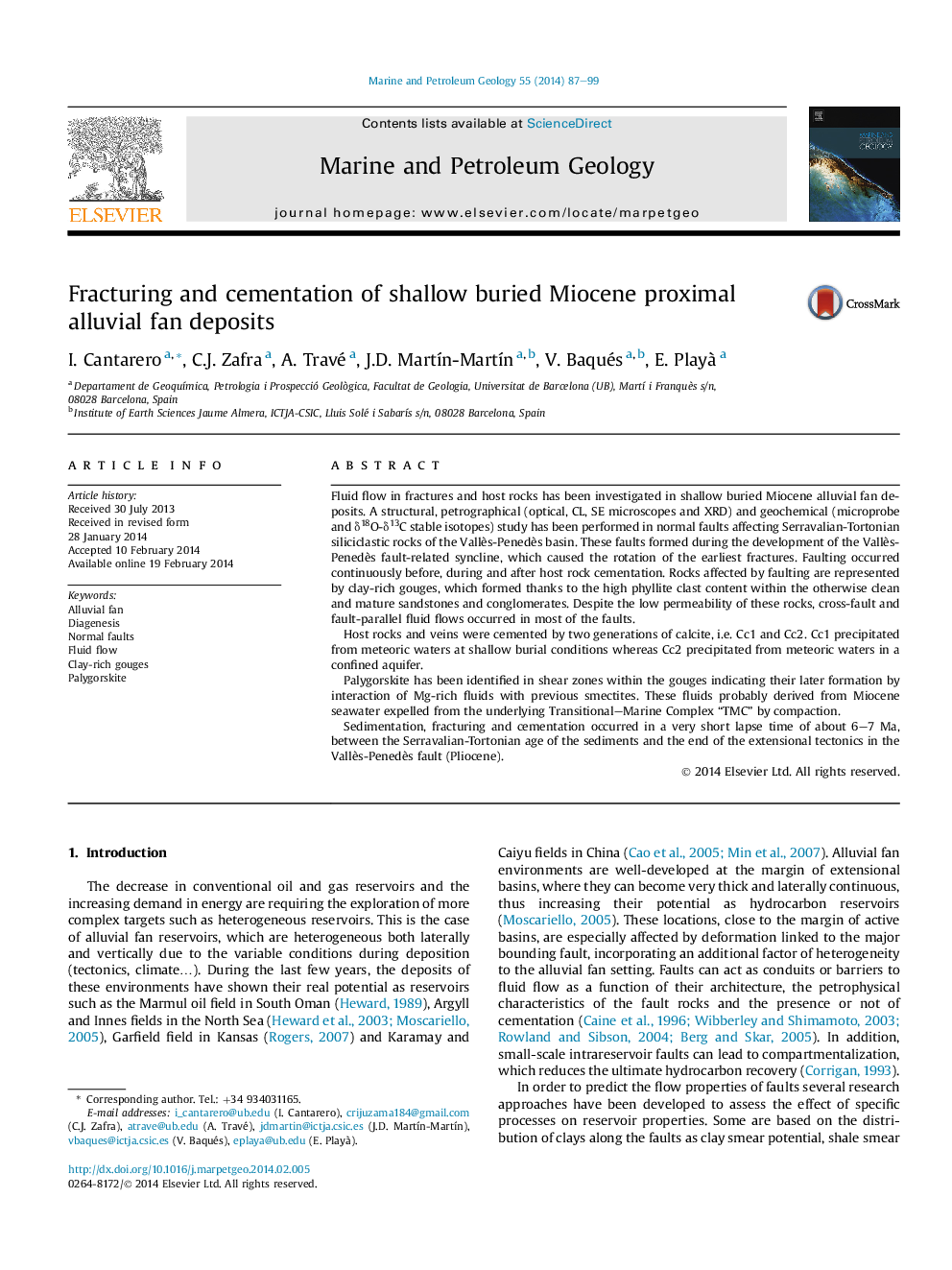| کد مقاله | کد نشریه | سال انتشار | مقاله انگلیسی | نسخه تمام متن |
|---|---|---|---|---|
| 6435426 | 1637169 | 2014 | 13 صفحه PDF | دانلود رایگان |
- Normal faults and calcite precipitation in veins coeval to host rock cementation.
- Normal faults formed during progressive development of major fault-related synclinal.
- Clay-rich gouges are controlled by the high phyllite clast content of host rocks.
- Palygorskite in clay-rich gouges was favoured by upflowing Mg-rich fluids.
- Meteoric diagenesis fluids in vadose and phreatic conditions.
Fluid flow in fractures and host rocks has been investigated in shallow buried Miocene alluvial fan deposits. A structural, petrographical (optical, CL, SE microscopes and XRD) and geochemical (microprobe and δ18O-δ13C stable isotopes) study has been performed in normal faults affecting Serravalian-Tortonian siliciclastic rocks of the Vallès-Penedès basin. These faults formed during the development of the Vallès-Penedès fault-related syncline, which caused the rotation of the earliest fractures. Faulting occurred continuously before, during and after host rock cementation. Rocks affected by faulting are represented by clay-rich gouges, which formed thanks to the high phyllite clast content within the otherwise clean and mature sandstones and conglomerates. Despite the low permeability of these rocks, cross-fault and fault-parallel fluid flows occurred in most of the faults.Host rocks and veins were cemented by two generations of calcite, i.e. Cc1 and Cc2. Cc1 precipitated from meteoric waters at shallow burial conditions whereas Cc2 precipitated from meteoric waters in a confined aquifer.Palygorskite has been identified in shear zones within the gouges indicating their later formation by interaction of Mg-rich fluids with previous smectites. These fluids probably derived from Miocene seawater expelled from the underlying Transitional-Marine Complex “TMC” by compaction.Sedimentation, fracturing and cementation occurred in a very short lapse time of about 6-7 Ma, between the Serravalian-Tortonian age of the sediments and the end of the extensional tectonics in the Vallès-Penedès fault (Pliocene).
Journal: Marine and Petroleum Geology - Volume 55, August 2014, Pages 87-99
